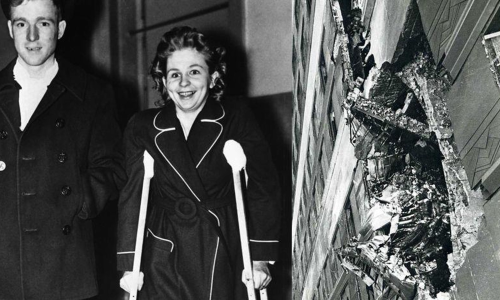On 28 July 1945, 20-year-old Betty Lou Oliver plunged 75 storeys (around 300 m or 1,000 ft) in an elevator down New York City’s Empire State Building, after an American B-25 bomber plane crashed into it. Betty’s descent down what was then the world’s tallest building ended in the basement, where she had to be cut out of the mangled elevator.
Miraculously, Betty didn’t die, although she did suffer a broken neck, back, and pelvis.
The catastrophe was caused by 27-year-old Lieutenant Colonel William F. Smith, a decorated fighter pilot who had served in the war in Europe, which had been over for almost three months. He was carrying out a basic mission, transporting army personnel from Massachusetts to Newark Metropolitan Airport in New Jersey, but once he got to New York he made a fatal error. The city was swept with thick fog, and rather than turning left after the Chrysler Building, Smith mistakenly turned right, bringing him directly over midtown Manhattan.
George A. Mount, a manager at the elevator company who inspected the site afterwards, said the elevator shaft’s concrete floor was “crushed like an eggshell”. All six cables to which the cab was attached were snapped, and the automatic braking cable was also destroyed, meaning it fell without any braking system at all.
What likely saved Betty’s life was the elevator being slowed down by air pressure within the relatively airtight shaft, in addition to the impact at the bottom being cushioned by severed cables piling up in a spring-like spiral on the floor.







